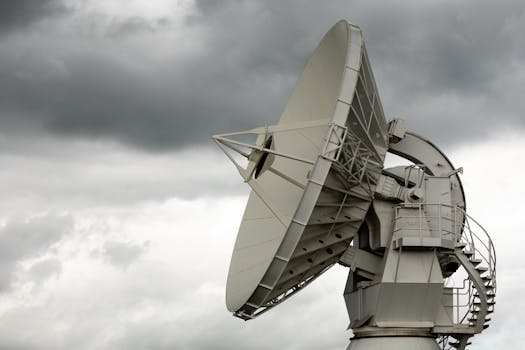GEO Satellites: Unlocking the Power of Geostationary Orbit
GEO satellites are a crucial part of modern satellite technology, providing a wide range of services including telecommunications, weather forecasting, and navigation. In this article, we will delve into the world of GEO satellites, exploring their history, benefits, and applications.

GEO Satellites: Unlocking the Power of Geostationary Orbit
GEO satellites, or Geostationary Orbit satellites, are a type of satellite that orbits the Earth at an altitude of approximately 36,000 kilometers, remaining stationary relative to a fixed point on the planet. This unique characteristic allows GEO satellites to provide a wide range of services, including telecommunications, weather forecasting, and navigation. GEO satellites have been a crucial part of modern satellite technology, and their impact is felt across various industries and aspects of our lives.
A Brief History of GEO Satellites
The concept of GEO satellites was first proposed by scientist Arthur C. Clarke in 1945. However, it wasn’t until the 1960s that the first GEO satellite, Syncom 2, was launched. Since then, numerous GEO satellites have been launched, with each generation offering improved capabilities and services. Today, there are over 500 GEO satellites in orbit, providing a wide range of services to users around the world.
Benefits and Applications of GEO Satellites
GEO satellites offer several benefits, including global coverage, high bandwidth, and reliability. These benefits make them ideal for various applications, such as telecommunications, where they provide internet connectivity, television broadcasting, and mobile networks. GEO satellites are also used for weather forecasting, navigation, and Earth observation, providing critical data for scientists, policymakers, and emergency responders. Additionally, GEO satellites play a vital role in search and rescue operations, helping to locate missing people and aircraft.
Challenges and Future Developments
Despite the many benefits of GEO satellites, there are also challenges associated with their use. One of the main concerns is the increasing amount of space debris in Geostationary Orbit, which poses a risk to operational satellites. Furthermore, the growing demand for satellite services has led to a shortage of available slots in Geostationary Orbit, making it essential to develop new technologies and strategies to manage this limited resource. Researchers are exploring new concepts, such as satellite constellations and optical inter-satellite links, to enhance the capabilities of GEO satellites and address these challenges.
Conclusion
In conclusion, GEO satellites have revolutionized the way we communicate, navigate, and understand our planet. As technology continues to evolve, we can expect to see even more innovative applications of GEO satellites. From telecommunications to Earth observation, the impact of GEO satellites is undeniable. As we look to the future, it is essential to address the challenges associated with GEO satellites and develop sustainable solutions to ensure the long-term viability of this critical technology.




